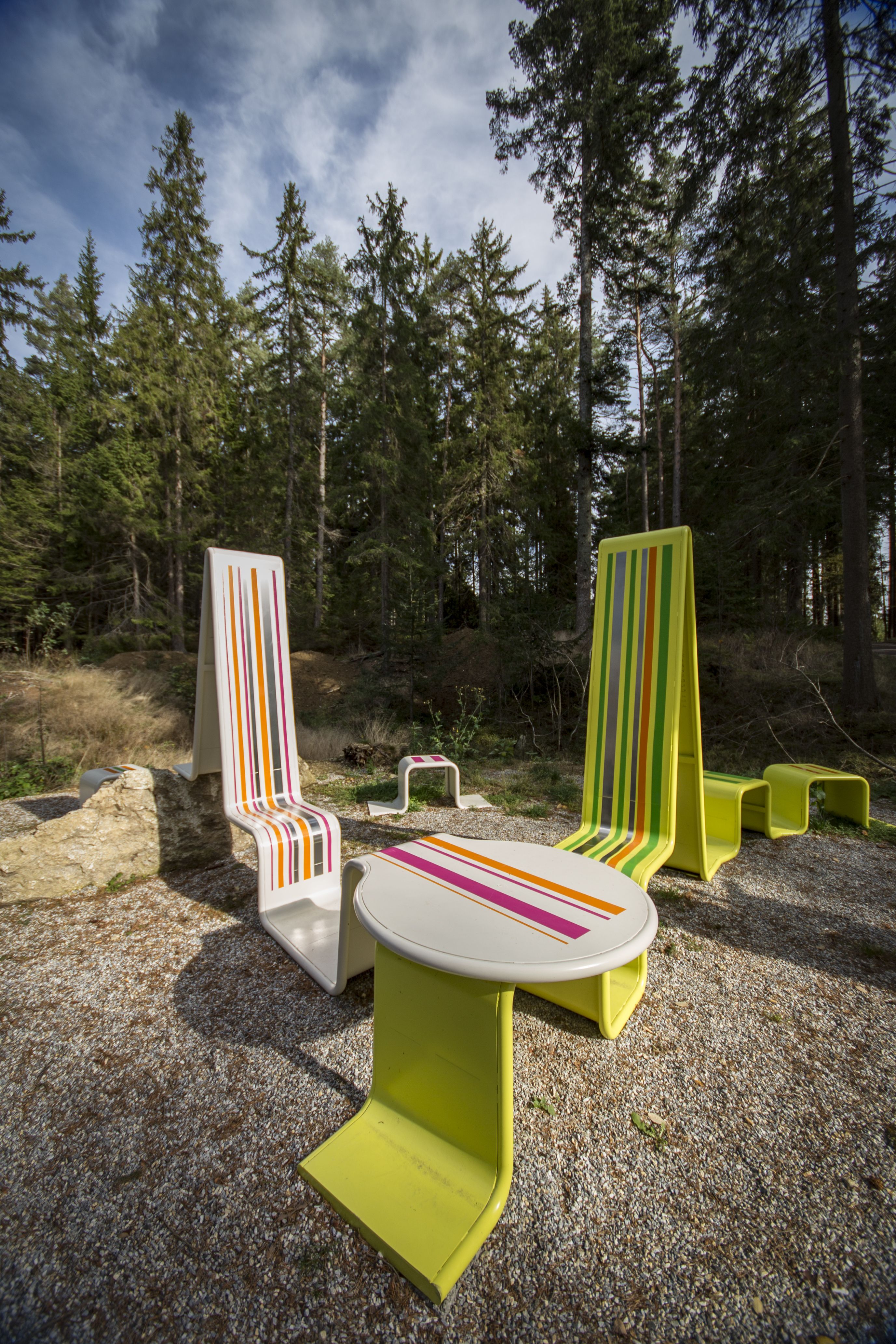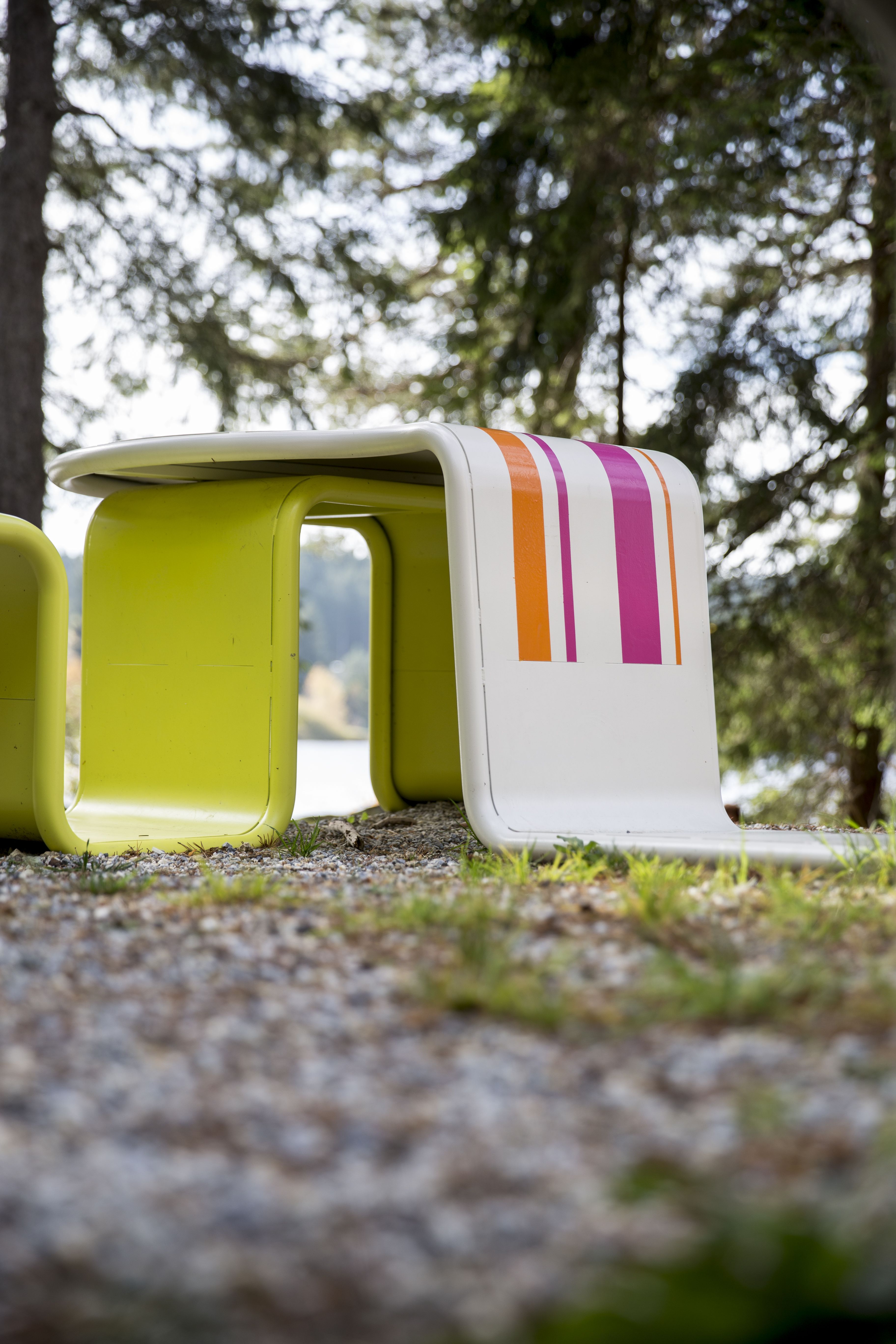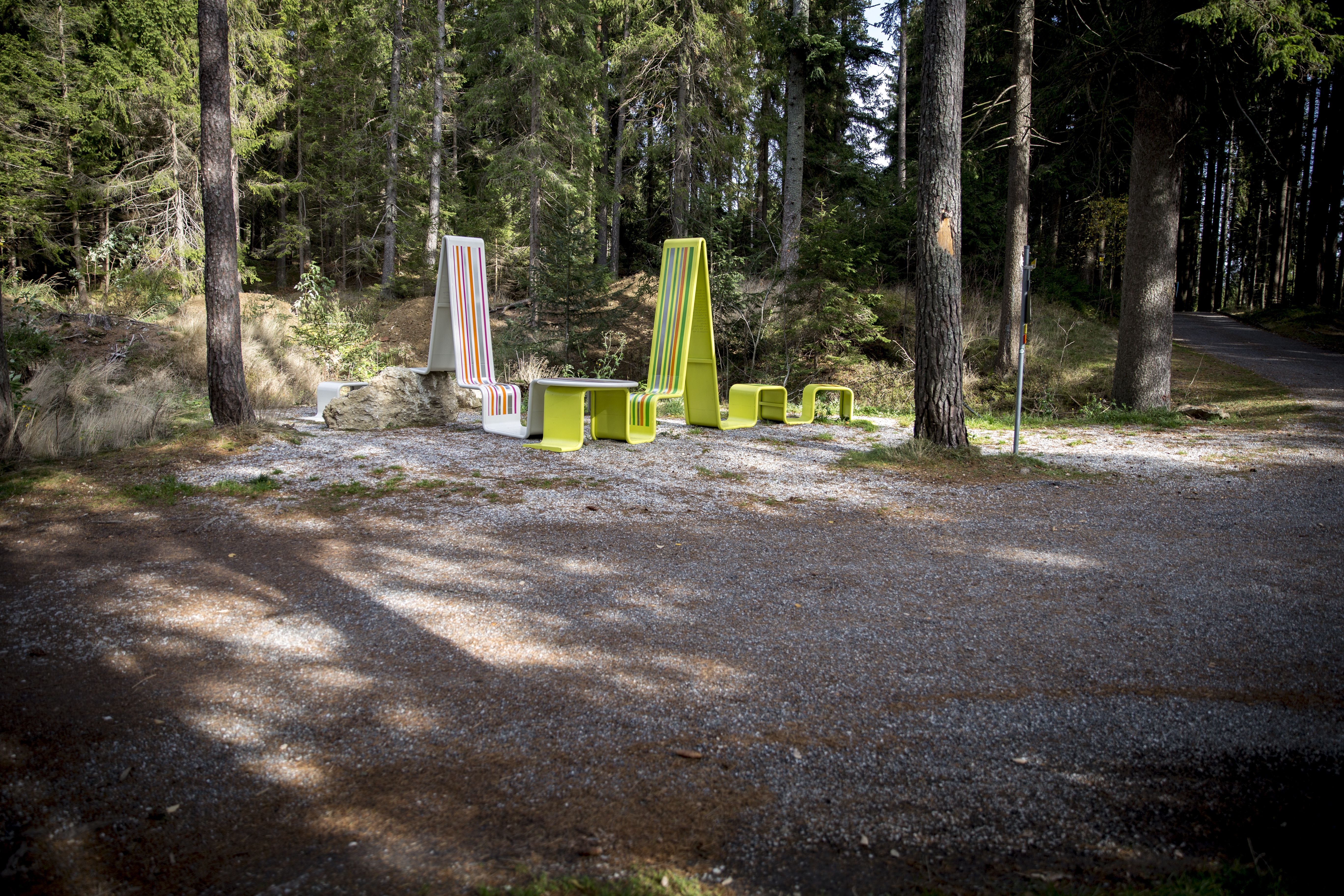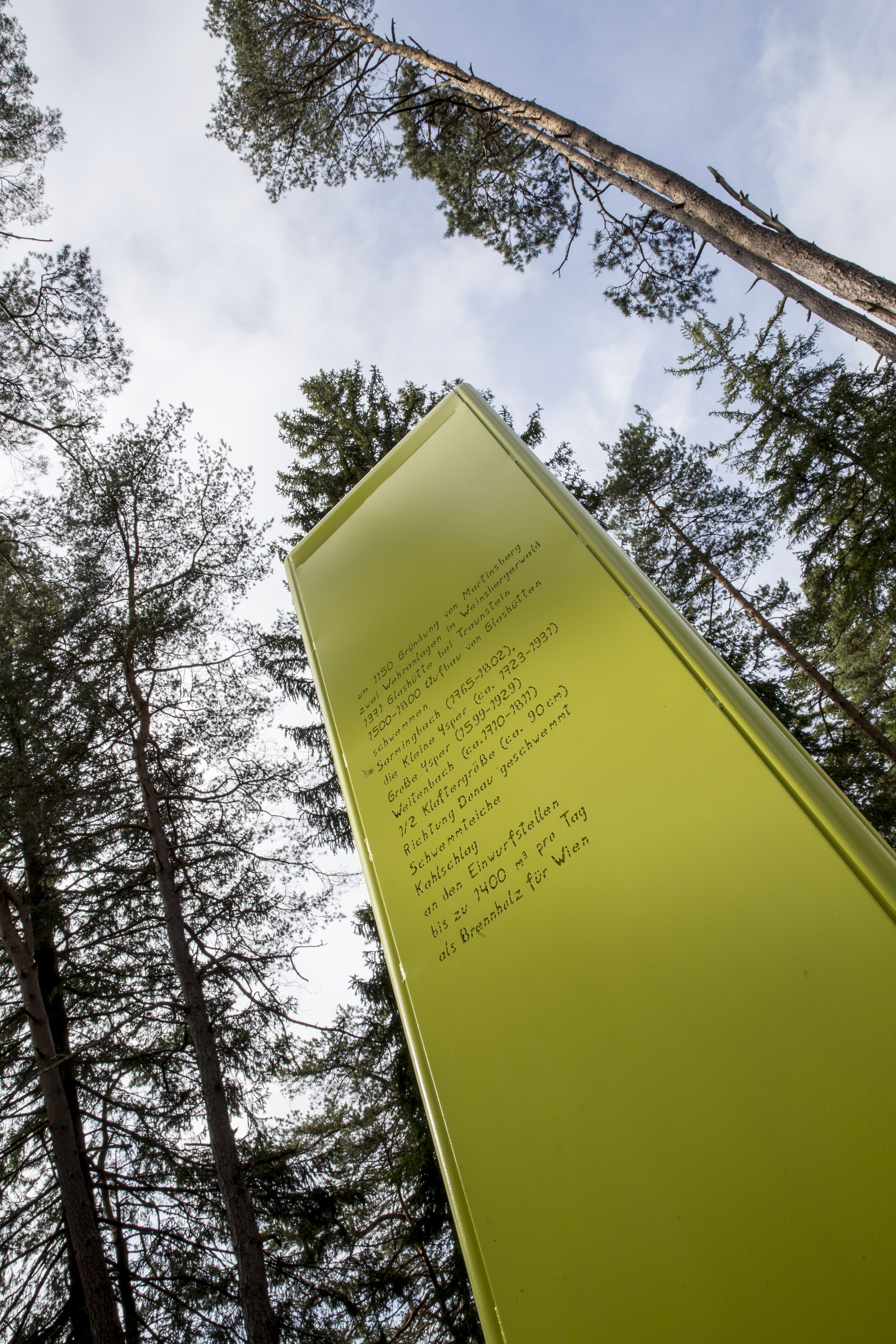Christine Hohenbüchler,
Irene
:
Schwemmen
Back
Information
In the town of Martinsberg, there is a place where two hiking trails meet: the long-distance Kremstalweg and the Yspertal-Weitental loop. As one of the main projects in the Lower Austrian Landesausstellung (State Exposition) in 2017, both trails were adapted and rebranded as “ECHTdeckungsrouten” (Real Discovery Trails). At the place where the two trails cross, Christine and Irene Hohenbüchler have designed a rest stop. The vibrant sculpture on which people can sit and rest reflects the artists’ continuous interest in creating places for encounters and social participation.
The site the artists selected, which is located in the forest and offers a direct view of Edlesberger Pond, is close to the intersection of the two hiking trails. Like other ponds nearby, in the 18th century Edlesberger Pond was used for rafting fire wood that was transported to Vienna. These ponds (called “Schwemmteiche”) were thus designed to hold enough water for rafting timber down the Ysper River. The flowing shape of the sculpture refers to the original meaning of “Schwemmen” in German: “to let something float.” Two curving pieces of metal referring to waves on the water create a unit with seats and a table where the two pieces meet. They thus encourage people to talk with one another. The sculpture’s bright, vibrant stripes of color remind us of traditional patterns of fabric used for awnings and garden furniture. They also mimic the markers on the hiking trails, but with different color combinations. The texts punched in the metal surfaces, which can only be detected on closer inspection, are based on the stories of inhabitants whom the artists met by chance as well as on historical research. Designed for hikers to read while resting, they do not convey factual information, like information panels normally do. In Schwemmen , Christine and Irene Hohenbüchler decided rather to work with texts that seem fragmentary. This particular literary format is typical for their personal approach to language, which they have been developing over time in their work on different projects. Because the texts are not factual, they leave room for us to ask our own questions, while pointing out things that may be missing in our personal and collective consciousness. In this way, the artists raise our awareness of a chapter of local history that is in danger of being forgotten: They restore the historical practice of rafting timber, which was included in the list of intangible cultural heritage in Germany in December 2014, to our contemporary cognizance. Christine and Irene Hohenbüchler have transformed a sculpture for people to sit and rest into a “monument” for rafting timber. In line with their artistic practice, the place where the two hiking trails meet thus becomes a "situation" that people can make their own and use for reflection.
(Barbara Holub, Translation: Michelle Miles)





